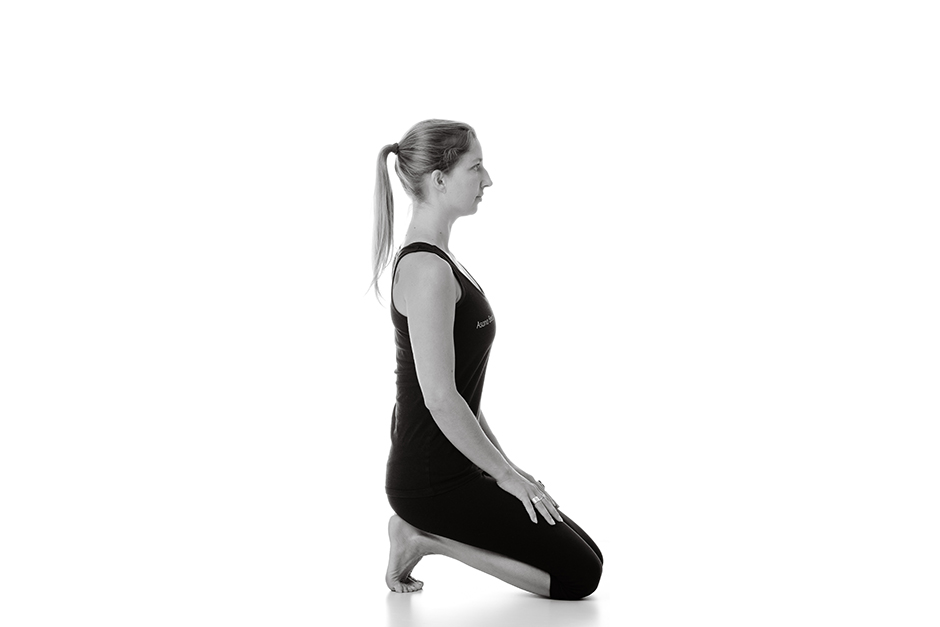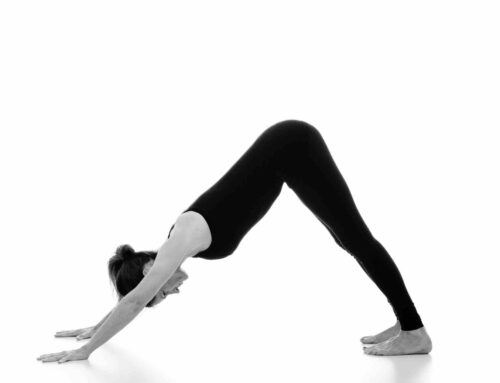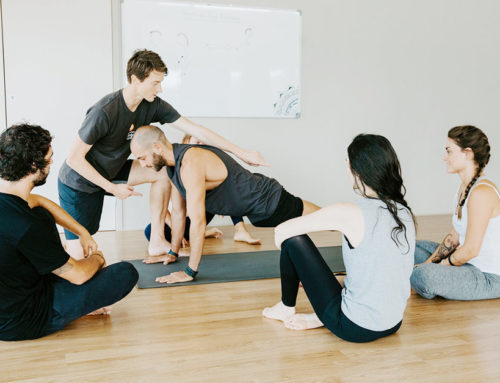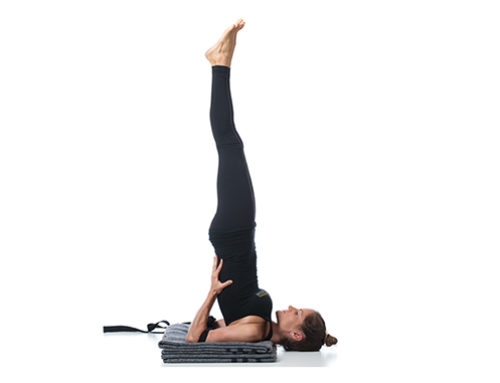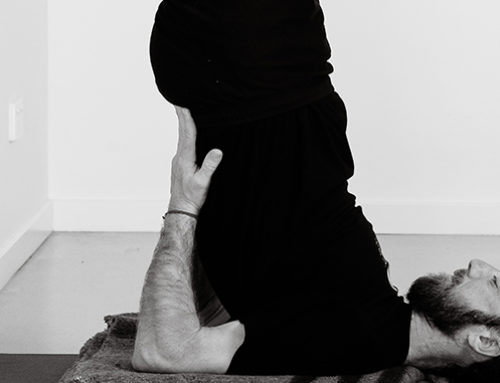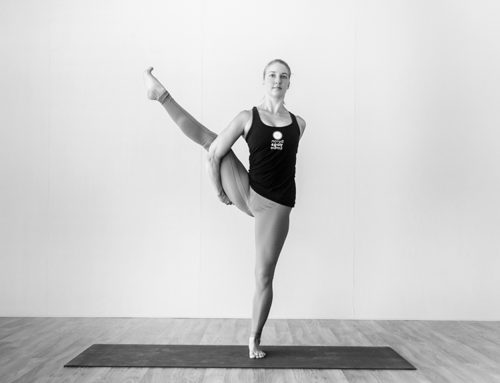Despite its apparent simplicity, Toe Sit is one of the more intense yin yoga postures. Patience and persistence are key – over time you can learn to enjoy this pose and appreciate its myriad benefits.
Methodology: Start in a four-point kneeling position. Bring the knees together and feet together and tuck the toes under.
Slowly begin to walk your hands back towards your knees and take your buttocks towards your heels. Once your buttocks are resting on your heels, ensure all 10 toes are tucked under – you might need to use your fingers to tuck your pinky toes under. As much as possible, centre your weight on the balls of your feet, not up on your tip-toes.
If your toes feel pretty fiery straight away, you can back off by placing a double-folded blanket or a bolster under your knees. This will take some of the pressure off your toes and make the posture if not enjoyable, hopefully manageable.
Rest one hand on top of the other in your lap, and resist the urge to fidget. Relax. Breathe. Soften into the sensations. Notice where you begin to hold tension – let your shoulders melt; allow your jaw to relax. Let your fingers be soft and still.
If this asana is new to you, aim to stay for a minute. Over time, work your way up to three minutes.
Release slowly and tenderly from this intense stretch – take your hands to the floor; slowly walk them forward and untuck your toes. Sit back down on your heels.
In yin yoga, we seek to work with connective tissue rather than muscles. Toe squat lengthens the plantar fascia, on the soles of the feet. This is the beginning of the superficial back line of fascia, one continuous sheet of connective tissue that runs along the soles of the feet, back of the legs, back of the torso, back of the neck, up over the top of the head, to just above the eyebrows. By releasing the fascia on the soles of your feet, you’re starting to create space and length through the whole back line of fascia.
Though you will most often encounter this posture in yoga classes, it could also be incorporated into the warm up phase of other yoga practices. You could combine it with shoulder stretches such as Garudasana (Eagle) or Gomukhasana (Cow’s face) arms.
Contra Indications: Knee injuries: (place a folded blanket between the calves and thighs). Ankle injuries or lack of mobility in the feet (for example, due to arthritis): place a bolster under the knees to decrease the intensity, or avoid the pose. As always, discomfort is okay but pain is not!
Benefits: This pose gives our often-neglected ankles and feet a good stretch and lengthens the plantar fascia (connective tissue on the sole of the foot). It stimulates all six lower-body meridians – the bladder, kidney, stomach, spleen, gall bladder and liver – which all begin or end in the toes.

